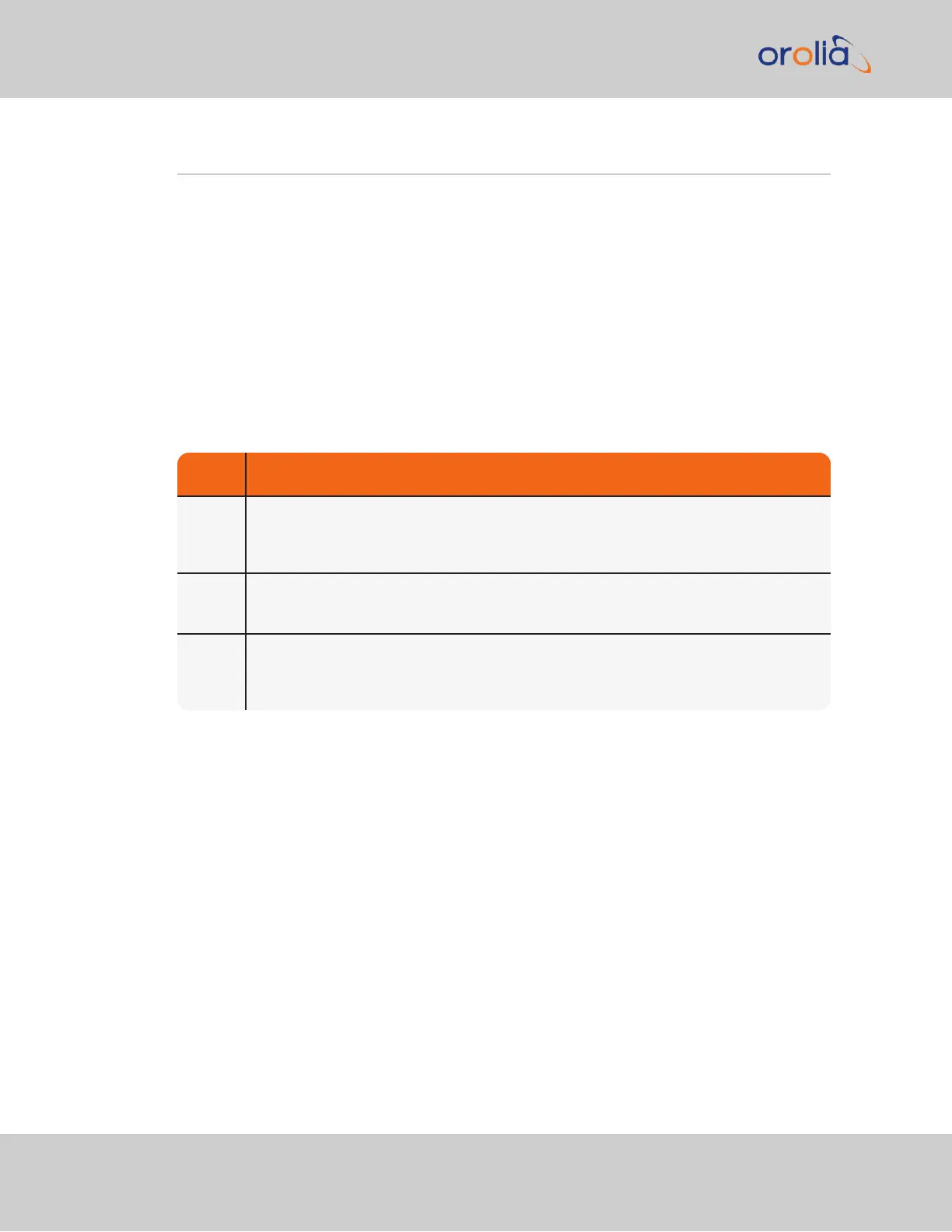4.3 Managing Users and Security
4.3.1 Managing User Accounts
Users need to authenticate as the login to SecureSync. The system administrator is
responsible for maintaining a list of user accounts (user names, passwords etc.) via the
MANAGEMENT > OTHER: Authentication screen of the SecureSync WebUI
(HTTP/HTTPS). Note that user accounts CANNOT be created or edited via CLI com-
mands using telnet or SSH.
4.3.1.1 Types of Accounts
There are three types of accounts:
Account
Type
Permissions
"user" These accounts are intended for users only e.g., operators. These "user" accounts are
read-only accounts, i.e. they do not allow any editing rights and are restricted to reviewing
status-related information. The Web UI will not show (or gray-out) any editing func-
tionality.
"admin" Administrator accounts are intended to be used by system administrators. These accounts
have writing access. You can add additional admin accounts to the pre-installed admin-
istrator account
spadmin
.
"factory" The default factory account with the username
spfactory
is meant to provide access to
Orolia technical support personnel. You can delete this account, if you so prefer. Note,
however, that executing the
Clean and Halt
command will recreate the Factory
account.
4.3.1.2 About "user" Account Permissions
As outlined above – unlike "administrator" accounts – "user" accounts are read-only
accounts, i.e. they do not allow any editing rights and are restricted to reviewing status-
related information. Otherwise, the privileges assigned to admin groups are exactly the
same whether logging in via the WebUI, or connecting via SSH.
Account Differences, General
While most menus look the same to "admin" and "user" type accounts(except the
MANAGEMENT menu, see below), the screens and panels located below the main menus
will differ in such that the "user" UI will show fewer (if any) configuration options:
250
CHAPTER 4 • SecureSync 2400 User Manual Rev. 2
4.3 Managing Users and Security
